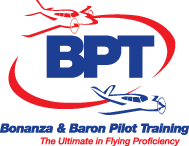
1. What is the obstacle clearance a pilot must maintain within 4 nm of mountainous terrain on an IFR flight that is cleared to operate VFR on top?
A. 3,000’ AGL within any obstacles within 5 nm
B. 2,000’ AGL within any obstacle within 4 nm
C. 4,000’ AGL within any obstacle within 6 nm
2. True or False: Since 2012, the AIM has recommended taxiing with transponders set to “ALT” to improve airport ground surveillance systems functions.
3. You are picking up ice. You estimate that you can continue the flight for one hour without de-ice equipment. What intensity of icing would you report in a PIREP?
A. Moderate icing
B. Heavy icing
C. Light icing
D. Instrument icing
4. On final approach to a high-altitude runway, the tower calls you and says, “The preceding aircraft reported a 10 Knot airspeed gain at 300 AGL.” What is the name of the weather phenomenon about which the tower is alerting you?
A. Micro-burst
B. Wind shear
C. Turbulence
D. Mountain wave
5. Where a holding pattern is specified in lieu of a procedure turn, the holding maneuver must be executed within:
A. The 1-minute time limitation or DME distance as specified in the profile view.
B. A radius of 5 miles from the holding fix.
C. 10 knots of the specified holding speed.
6. The rate of descent on the glideslope is dependent upon:
A. True airspeed.
B. Indicated airspeed.
C. Ground speed.
1. B; 2. True; 3. C; 4. B; 5. A; 6. C



